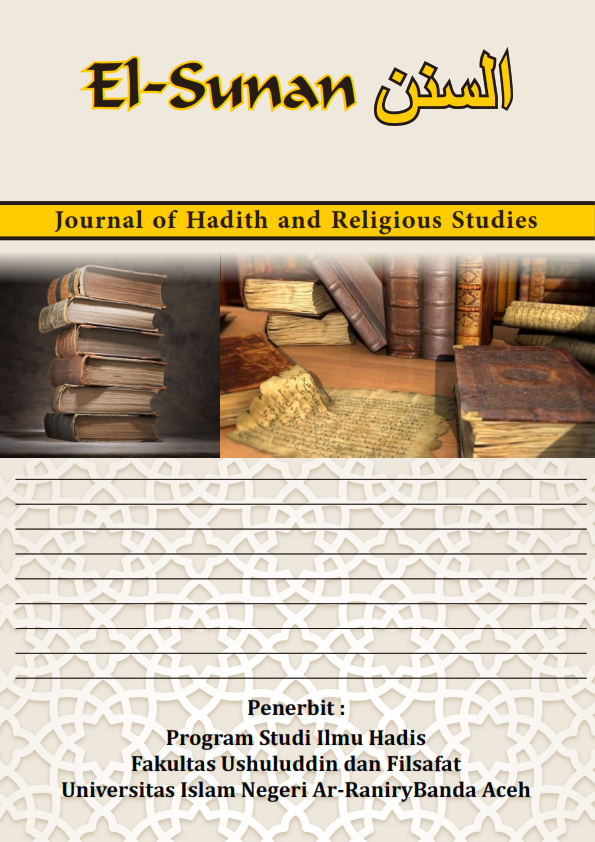Khirqah in Sufi Traditions: Hadith-Based Legitimacy and Its Spiritual Transmission
DOI:
https://doi.org/10.22373/el-sunan.v2i2.6825Keywords:
khirqah, Sufism, hadith traditions, tariqah, spiritual lineageAbstract
The khirqah is a significant element in Sufi traditions, symbolizing spiritual initiation and the transmission of esoteric knowledge. However, its origins remain debated, particularly regarding its connection to the Prophet Muhammad (PBUH) through Imam ‘Ali and Hasan al-Basri. Some scholars affirm this lineage, while others argue that khirqah was a later development within Sufi circles rather than a direct prophetic practice. This study employs a qualitative approach, analyzing classical Sufi literature, historical records, and hadith collections. Key hadith narrations related to the bestowal of garments, such as the Prophet (PBUH) clothing Ummu Khalid and Uwais al-Qarni receiving robes from Imam ‘Ali and Umar ibn al-Khattab, have been used to validate khirqah’s legitimacy. However, critics contend that these narrations reflect acts of generosity rather than structured initiatic bestowals. By the 14th century, khirqah evolved beyond a physical robe into a symbol of spiritual affiliation within Sufi orders (tariqas). Despite these debates, khirqah remains central to Sufi identity, signifying spiritual authority, ethical discipline, and lineage transmission. Scholars such as Ibn ‘Arabi emphasized that khirqah represents inner purification rather than merely an external garment.
References
Al-Bushiry. Shihab al-Din Ahmad Ibn Abi Bakr Ibn Ismail, Islamweb.net, Al-Maktabah al-Islamiyyah Kitab al-Sabq wa l-Ramy, bab al-Tahrish ‘ala al-Ramy, juz. 5.
Al-Mubarakfury, Muhammad Ibn ‘Abd al-Rahman ibn ‘Abd al-Rahim, Bab Ma Ja’a fi al-Imamah al-Sawda. Juz. 5, p. 335. Maktabah al-Islamiyyah
Al-Sya’rani, ‘Abd al-Wahhab. Al-Anwâr al-Qudsiyyah fi Ma`rifah Qawâid al-Sûfiyyah, vol. 11, Edited by Thaha ‘Abd al-Baqi Surur. Beirut: Maktabah al-Ma`ârif, 1962.
Al-Taftazani Abu al-Wafa al-Ghanimi. Sufi Dari Zaman ke Zaman. trans: Ahmad Rafi’i ‘Utsman. Bandung: Pustaka, 1974.
Ibn ‘Arabi, Nasab al-Khirqah, ta’liq Abd al-Rahman hasan Mahmud, Cairo: Alam al-Fikr, n.y.
Isam Mudin, Moh. “Suhbah: Relasi Mursyid dan Murid dalam Pendidikan Spiritual Tarekat.” Jurnal Tsaqafah, Vol. 11, No. 2, November 2015.
J. Spencer Tirmingham. The Sufi Orders In Islam. Oxford: At The Clarendon Press, 1973.
Khalilurahman. Mengenal Tasawuf Rasulullah; Representasi Ajaran Al-Quran dan Sunnah. Tangerang: Nurul Hikmah Pres, 2020.
Khalilurrahman. Membersihkan Nama Ibn ‘Arabi; Kajian Komprehensif Tasawuf Rasulullah. Tangerang: Nurul Hikmah Press, 2018.
Nuh Hamim, Aurad Tarîqah Syadhiliyyah. Kairo: Dâr Zâhid, 1997.
Suhrawardi, Syahabuddin. Awârif al-Ma’ârif. Vol. 1. Kairo: Mataba’ah al-Sa’âdah, n.y
Downloads
Published
How to Cite
Issue
Section
License
Copyright (c) 2024 Zuherni. AB

This work is licensed under a Creative Commons Attribution-NonCommercial-ShareAlike 4.0 International License.
- Authors retain copyright and grant the journal right of first publication with the work simultaneously licensed under an Attribution-NonCommercial-ShareAlike 4.0 International (CC BY-NC-SA 4.0) that allows others to share the work with an acknowledgment of the work's authorship and initial publication in this journal.
- Authors are able to enter into separate, additional contractual arrangements for the non-exclusive distribution of the journal's published version of the work (e.g., post it to an institutional repository or publish it in a book), with an acknowledgment of its initial publication in this journal.
- Authors are permitted and encouraged to post their work online (e.g., in institutional repositories or on their website) prior to and during the submission process, as it can lead to productive exchanges, as well as earlier and greater citation of published work.












.png)




